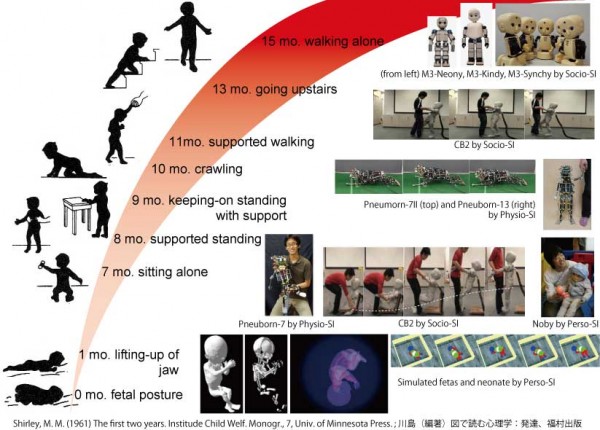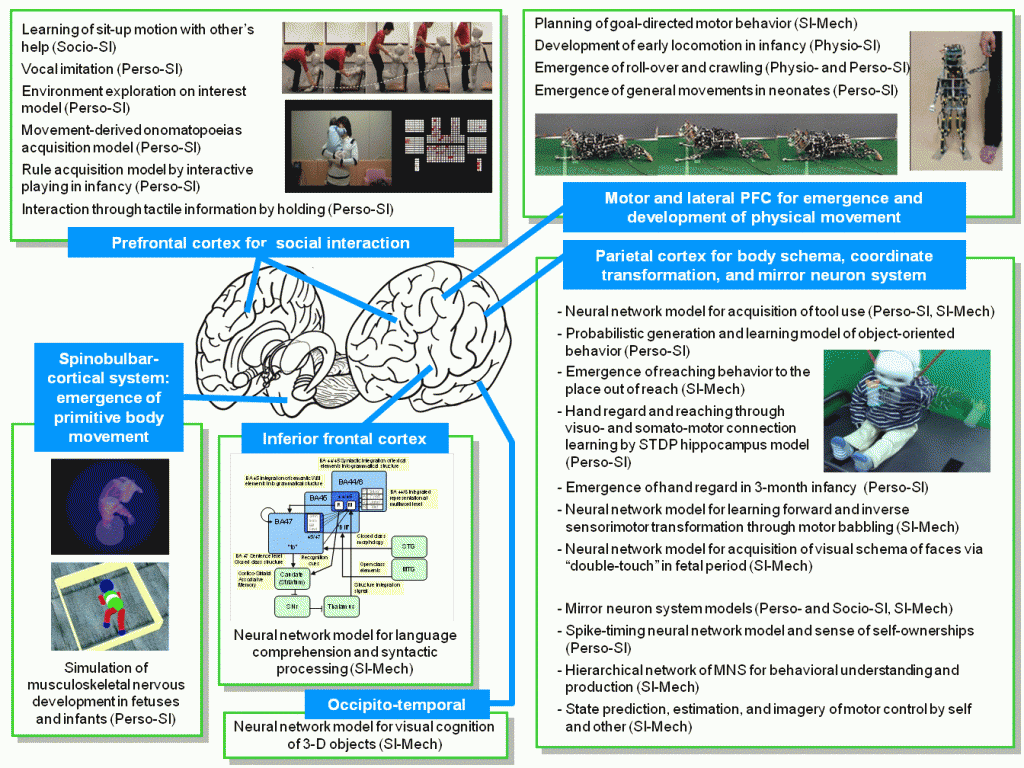Concluding Remarks
The achievements of our project are summarized into two figures based on the knowledge and findings in developmental psychology and cognitive neuroscience. Figure 1 shows a series of robot platforms we have developed along with the motor development of infants until one and half years old. Each platform was designed to focus on a specific issue of motor development at a certain age starting from an issue of sensori-motor mapping and body representation at the fetal age to that of early locomotion at over one year old (Pneuborn-13 or CB^2).
Fig. 1 The robot platforms developed in this project and their corresponding developmental stages in infants
Figure 2 indicates brain regions with boxes in terms of research topics, respectively, each of which has its corresponding studies we have done. Ideally, a unique and complete model consistent throughout the whole developmental process should be constructed. However, this is very difficult due to the limits of current technologies and the lack of sufficient knowledge of existing disciplines. Consequently, we adopted the strategy to focus on key issues of the development under these conditions, and we will try to reveal the principles behind these studies as a future issue.
Fig. 2 Brain regions and corresponding research topics studied during this project
Through the constructions of real robots, simulation environments, and computational models based on the knowledge of neuroscience, our project is expected to take roles not simply in bridging between micro and macro mechanisms, but more essentially in creating a new discipline towards human understanding which may cause a paradigm shift.
Future issues
(1) The extension of fetal and neonatal simulations: joint projects with medical doctors and neuroscientists are expected to reveal the principle of development (the rise of constructive developmental science), and further to propose possible clinical interventions for developmental disorders.
(2) The development of an anatomically accurate muscle-skeleton full body: overcoming the limitations of current artificial muscles, which are still far from real ones, may be a valuable contribution for BMI applications using artificial bodies, and consequently to the rise of constructive motor developmental science.
(3) The establishment of systems psychology: The robot platforms such as Neony, Kindy, and Synchy can be utilized by psychologists and cognitive scientists as subjects which can be controlled in psychological experiments. Computational modeling may enhance the way the robot platforms are used, and would lead to the rise of systems psychology.
(4) Self/others discrimination: one of the most fundamental issues of cognitive development is to understand the emergence of the concepts of self and others.


